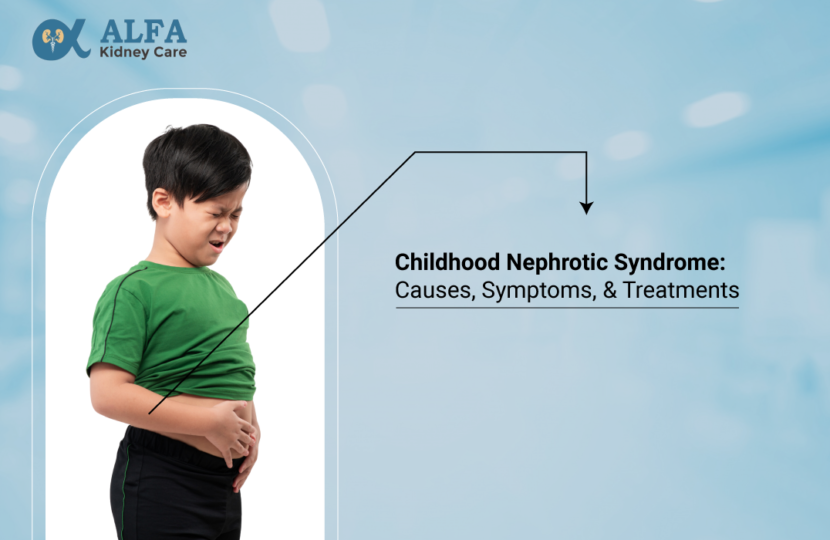Childhood nephrotic syndrome is one of those medical terms that can send parents into a spiral of worry. But what exactly is it? In the simplest terms, it’s a condition marked by an excess of protein in the urine, sudden weight gain, and swelling in various body parts, such as around the eyes, ankles, feet, or belly. It’s a signal from the kidneys that all’s not well in their world of filtering and balancing bodily fluids.
What Causes Childhood Nephrotic Syndrome?
The roots of childhood nephrotic syndrome are often shrouded in mystery. For many children, there’s no clear cause, making it a perplexing issue for doctors and parents alike. The most common culprit behind this condition in kids is something called minimal change disease. Despite its minimalistic name, its impact is anything but small, affecting the tiny structures in the kidneys known as glomeruli. While minimal change disease itself is a bit of an enigma, it’s believed to be linked to various factors, including kidney infections, allergic reactions, and even the overuse of common medications like ibuprofen.
Other triggers for childhood nephrotic syndrome span a range of kidney diseases in childhood, immune system issues, and even conditions such as diabetes and cancer. Sometimes, lifestyle factors like diet or certain medications can play a role, too.
The Symptoms to Watch For
Identifying childhood nephrotic syndrome early is crucial, yet challenging due to the subtlety of symptoms. Here’s a detailed breakdown to help you recognize the signs:
- Swelling Around the Eyes: A common early symptom, particularly noticeable in the morning. This puffiness can be a clear indicator of fluid retention, a hallmark of nephrotic syndrome.
- Spreading Swelling: Initially seen around the eyes, swelling can progress to affect the ankles, feet, and abdomen as the condition advances, signalling increased fluid retention across the body.
- Decreased Appetite: Children may show less interest in eating, which can lead to weight loss and weakness, further complicating their health condition.
- Fatigue: An overall feeling of tiredness or lack of energy is common, making children less active and more prone to rest than usual.
- Irritability: The discomfort and changes associated with nephrotic syndrome can make children unusually irritable or easily upset.
- Paleness: A noticeable loss of colour in the face and body, indicative of poor blood circulation or reduced blood volume due to the condition.
- Difficulty with Clothing: Swelling, particularly in the limbs, may make it hard for children to put on shoes or button clothes, impacting their daily activities and independence.
Diagnosing Childhood Nephrotic Syndrome
When it comes to diagnosis, your child’s doctor will start with a physical examination, looking out for symptoms like swelling and checking the skin’s colour. Urine and blood tests will follow, helping to assess kidney function and spot any protein loss. In some cases, a kidney biopsy might be necessary to get to the heart of the issue, offering a clearer view of what’s happening inside those vital organs.
Treatments for Childhood Nephrotic Syndrome
Managing childhood nephrotic syndrome focuses on two key objectives: minimizing protein loss in urine and reducing swelling. Below are the primary treatments used to achieve these goals, along with their associated benefits and risks:
Prednisone:
- Role: Acts as a corticosteroid, reducing inflammation and suppressing the immune system to halt protein loss.
- Benefits: Often results in increased urine output and decreased swelling within a few weeks.
- Side Effects: This can include increased appetite, weight gain, mood changes, and a heightened risk of infections. Typically, these effects are temporary and subside after stopping the medication.
Immunosuppressants:
- When Used: Considered when prednisone is ineffective or its side effects are intolerable for childhood nephrotic syndrome.
- Role: These drugs lower the activity of the immune system, offering an alternative way to manage the syndrome.
- Benefits: Effective in controlling symptoms for many children.
- Risks: Potential side effects include increased vulnerability to infections, hair loss, and decreased blood cell production.
Diuretics (Water Pills):
- Common Choice: Furosemide is frequently prescribed.
- Role: Helps eliminate excess salt and water from the body, addressing swelling.
- Benefits: Significant in managing swelling, and improving comfort and mobility.
Each treatment option comes with its own set of considerations. Parents and guardians must work closely with healthcare providers to monitor the child’s response to treatment and adjust the strategy as needed. This collaborative approach ensures the most effective management of childhood nephrotic syndrome, optimizing outcomes while minimizing potential side effects.
Looking Beyond Treatment
While medical treatment is crucial, there’s a lot that parents can do at home to support their child’s health. Keeping an eye on symptoms without being overly protective is key. Children with nephrotic syndrome need to lead as normal a life as possible, attending school and socialising with friends. A low-salt diet can help manage swelling, and it’s important to stay vigilant for signs of relapse, such as the return of protein in the urine.
In Conclusion
In conclusion, navigating the path of childhood nephrotic syndrome treatment requires a delicate balance of medical intervention and vigilant care. With options ranging from prednisone and immunosuppressants to diuretics, the goal remains consistent: to alleviate symptoms and improve the quality of life for our young ones. Dr. Ravi Bhadania’s expertise in Pediatric Nephrology in Ahmedabad offers a beacon of hope and guidance for families grappling with this condition. Under his care, children with nephrotic syndrome can look forward to a future where their condition is not just manageable but one where they can thrive.


